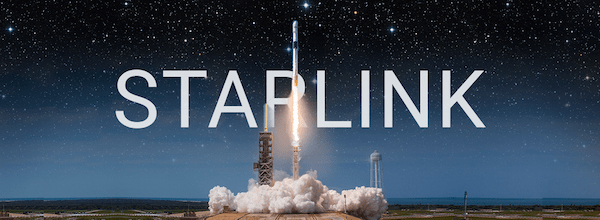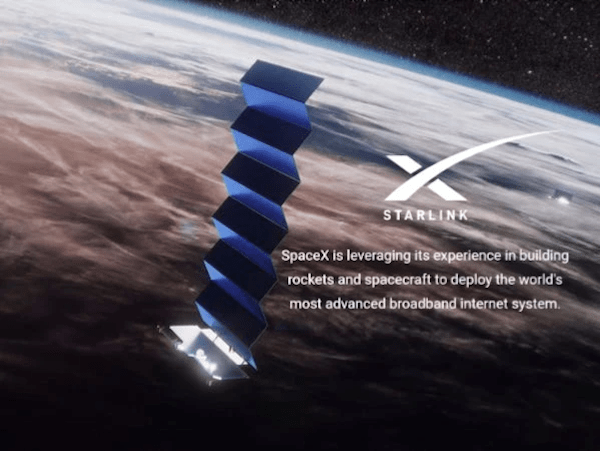SpaceX has been launching a steady stream of satellites over the last year, with nearly 600 now in low Earth orbit. They are part of the company’s Starlink satellite constellation that aims to bring high-speed internet to every inch of the planet, including hard-to-reach rural areas. SpaceX founder and CEO Elon Musk says his Starlink constellation will provide faster internet and greatly reduce the latency issue that plagues current satellite internet technology.
Starlink’s internet service is expected to cost about $80 a month with installation and equipment adding an additional fee of $100 to $300. The company just recently began taking rural user information to receive updates on news and service availability in their area and to be part of the beta testing. After you sign up with an email address and ZIP code, SpaceX says it may send you future messages about the upcoming beta tests which are thought to be starting later this summer. Click HERE. I signed up because our internet sucks!
The funding is part of the FCC’s Rural Digital Opportunity Fund auction, which will support the deployment of broadband networks to unserved areas in rural America. Broadband providers competing for the funds must demonstrate latency under 100 milliseconds by July 15 to qualify. Interestingly, the FCC doesn’t think Starlink will pass muster, at least not by the deadline. Musk says Starlink is well below the 100-millisecond threshold and has actually been aiming for just 20 ms, a level better than some traditional cable-based services.
For those not familiar, latency is the time it takes for your internet signal to travel from your computer to your internet service provider (ISP), to the website server, and then back to you. Satellite internet latency now averages between 500 and 600 milliseconds (ms). A big reason it is so high is the distance – stationary satellites currently in use are about 22,000 miles away. Data has to make that trip 4 times! Starlink’s satellites, however, are only about 342 miles above the Earth, aka near-Earth orbit.
In total, Starlink plans to deploy 12,000 satellites with a possible extension to 42,000 in the future. Musk has said only about 800 satellites are needed to provide “moderate” coverage in the U.S. and Canada, a number it could reach before the FCC deadline. Even if Starlink misses out on this round, the rural broadband initiative should have another funding opportunity available later this year.
Starlink has the potential to be an extremely lucrative business for SpaceX. The total Starlink network is estimated to cost about $10 billion, with about $1.7 billion in funding already raised since early last year. Musk believes Starlink has the potential to pull in as much as $30 billion in revenue a year, which SpaceX can in turn invest back into its launch business. Let’s hope some giant steps are made and Musk pull another rabbit out of the hat, this time bringing better internet to more remote locations. (Sources: TechCrunch, Satellite Today, Engadget, Inverse)










